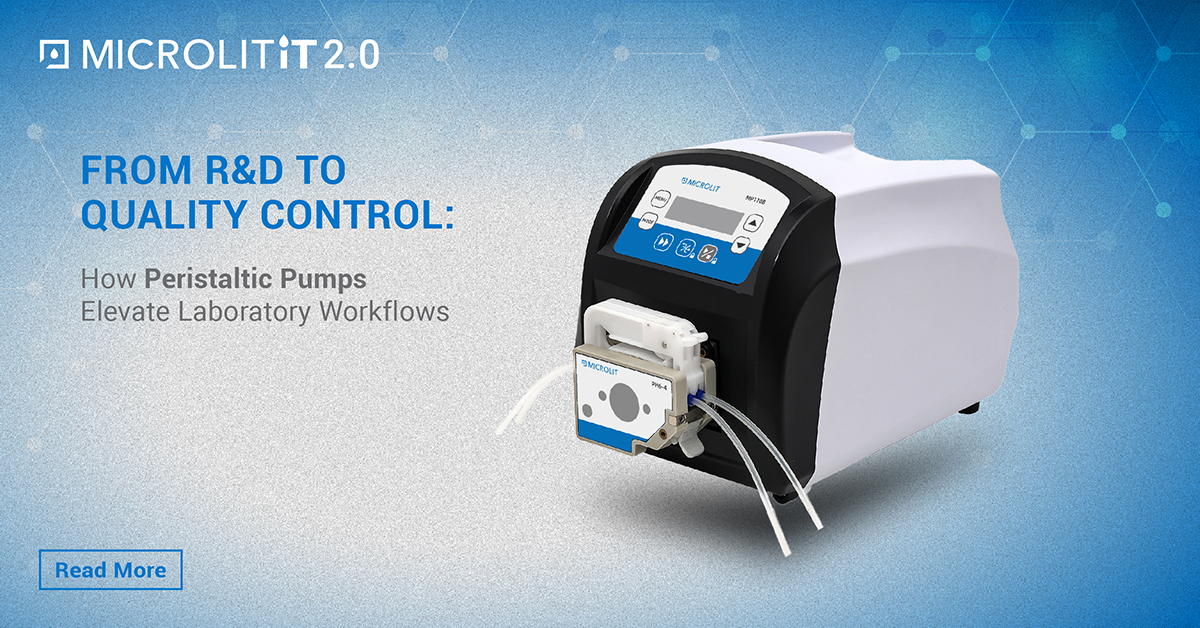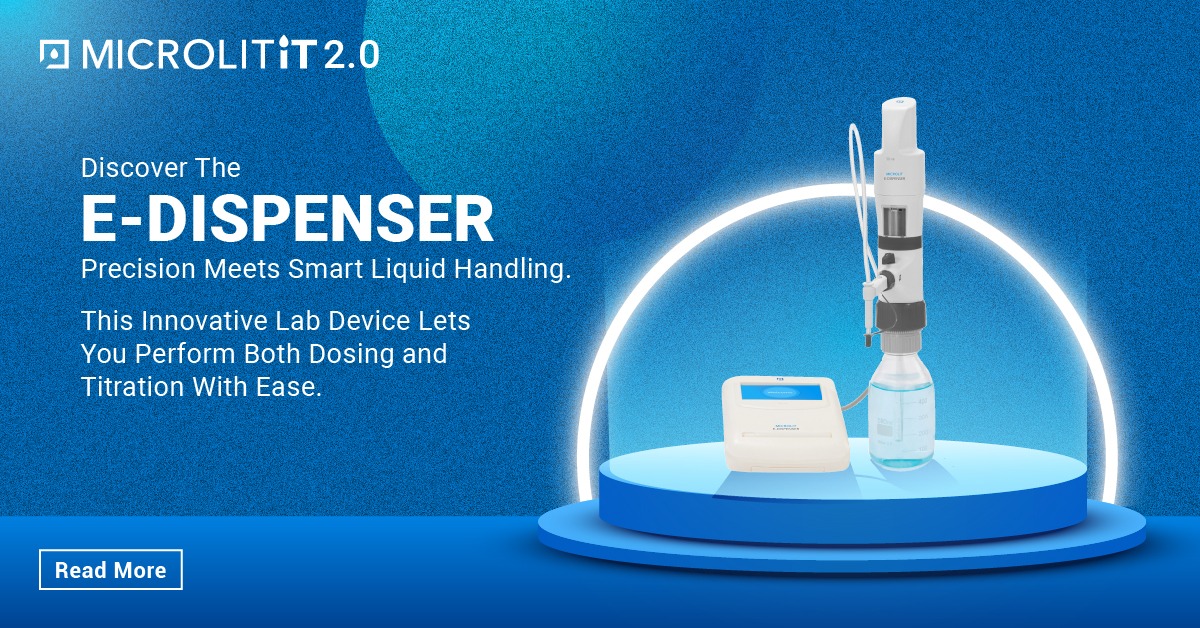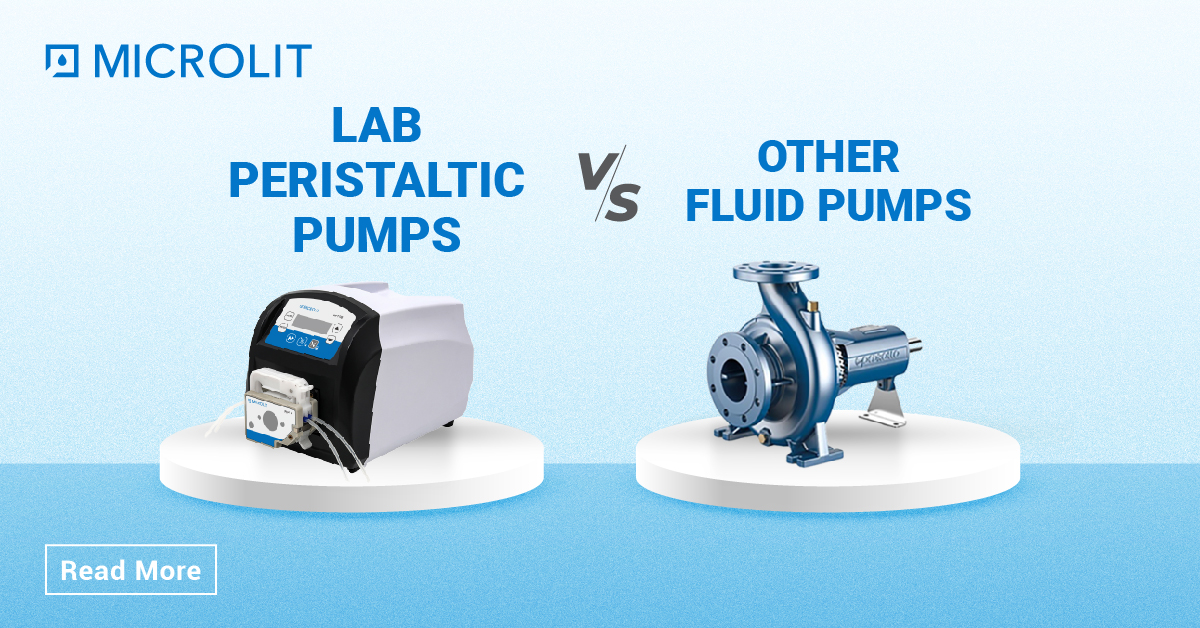An Advanced Guide to Titration
- May 9, 2022
- ENQUIRE NOW
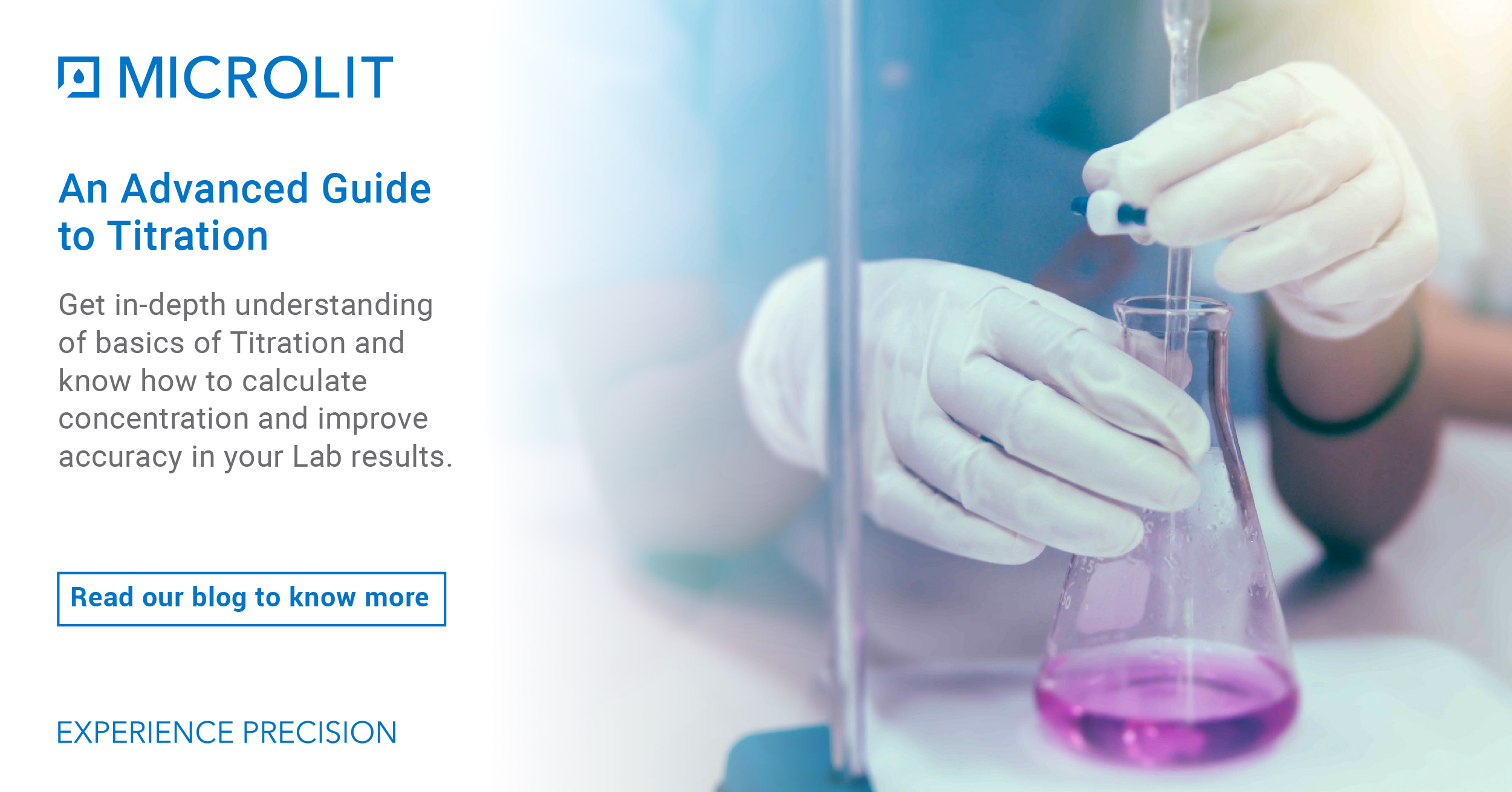
What is a Titration?
Titration is a method commonly used in a laboratory which uses a solution of a known concentration to analyse and determine the known concentration of another solution. Typically, the titrant (the known solution) is added from a burette to the known quantity of the analyte (the unknown solution) until the reaction is complete. Often, an indicator is used to usually signal the end of the reaction, the endpoint.
Types of Titration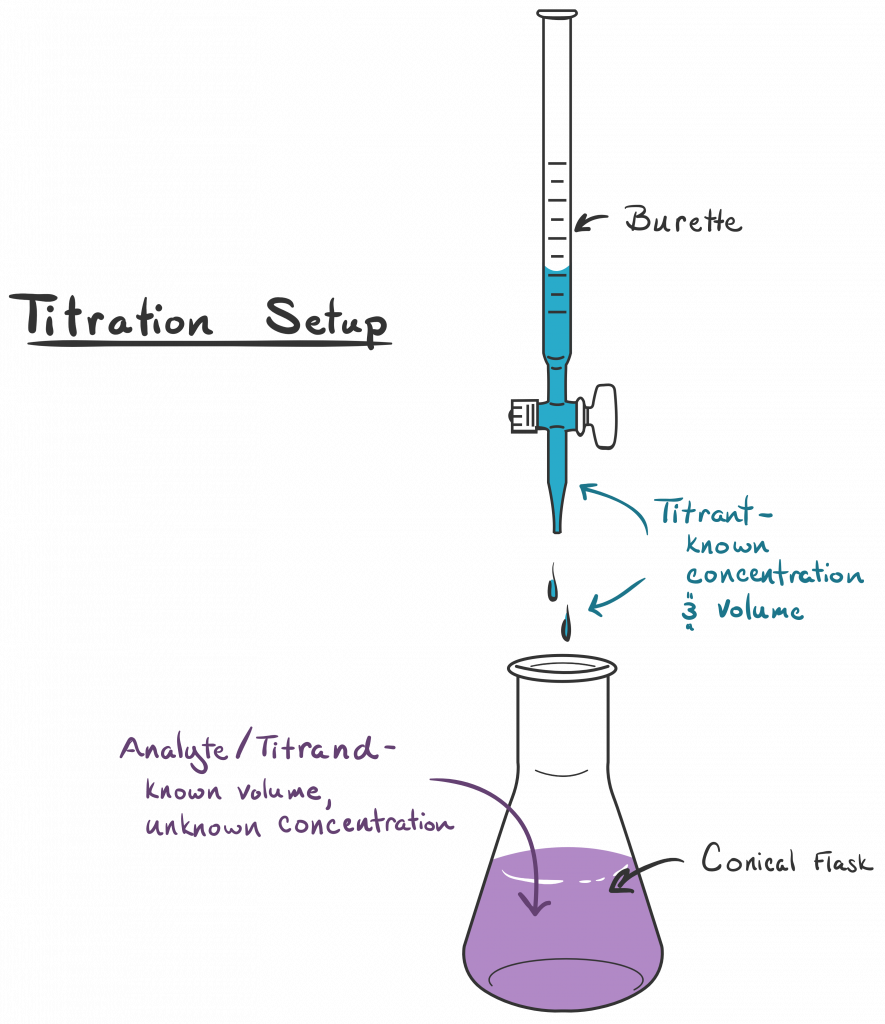
There are several types of titration with different goals and processes. However, the most common types of titration in quantitative chemical analysis are redox titration and acid-base titration.
These four common titrations are:
• Acid-base titrations
• Redox titrations
• Precipitation titrations
• Complexometric titrations
1. Acid-base Titration
An acid-base titration is a chemical testing process used to determine the unknown concentration of an acid or base by neutralizing the other acid or base of the known concentration. Acid-base titration can also be used to measure the purity of chemicals.
HA + BOH → BA + H2O
Acid + Alkali → Salt + Water
Or (H+) + (OH–) → H2O
An acid-base titration is based on the reaction that neutralization occurs between a base or an acid and an analyte. In this kind of titration, a reagent is mixed with the sample solution until it reaches the required pH level. This type of titration mainly depends on the track change in the pH or pH meter.
2. Redox Titration
Redox titration is a laboratory method of determining the concentration of a given analysis by creating a redox reaction between the titration and the analyte. Sometimes, This type of titration needs the use of a potentiometer or redox indicator. It is also known as an Oxidation-reduction reaction.
Redox titration involves a transfer of electrons between the used analyte and the titrant. These kind of titrations are named after the reagent that is used in are as follows:
• Permanganate Titrations
• Dichromate Titrations
• Iodimetric and Iodometric Titrations
Permanganate Titration
In this, the potassium permanganate is used as an oxidizing agent maintained with the use of dilute sulphuric acid. The solution remains colourless before the endpoint. The equation is:
2KMnO4 + 3H2SO4 → K2SO4 + 2MnSO4 + 3H2 + 5O
Or MnO4– + 8H + 5e → Mn2++ 4H2O
Dichromate Titration
In this titration, potassium dichromate is used as an oxidizing agent. The medium is maintained acidic by use of dilute sulphuric acid. The solution of potassium dichromate can be used in titration directly. The equation is:
K2Cr2O7 + 4H2SO4 → K2Cr2(SO4) + 4H2O + 3[O]
Or Cr2O27- + 14H + 6e → 2 Cr3+ + 7H2O
Iodimetric and Iodometric Titration
The reduction of free iodine to iodide ions and oxidation of iodide ions to free occurs in Iodimetric and Iodometric Titrations.
l2 + 2e → 2l–……………. (reduction process)
2l– + 2e → 2e ……………. (oxidation process)
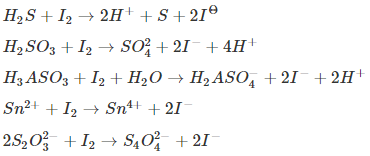
Reactions involved in Iodimetry Titration
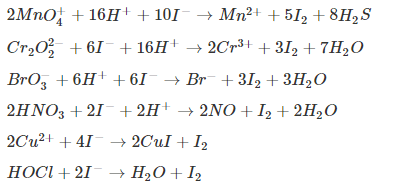
Reactions involved in Iodometry Titration
The solution is used as an indicator. Free iodine is used in the iodometric titration, while in the iodometric titration an oxidation agent is used to react the process to liberate free iodine.
3. Precipitation Titration
Precipitation titration is based on insoluble precipitation where two reacting substances are brought into contact, called precipitation titration. The titrant reacts with the analyte and forms an insoluble material. The titration continues until the analysis is completely consumed. When the titrant is excess it reacts with the indicator and signals to end the titration process.
For example, To determine the concentration of chloride ion in a certain solution, we can titrate this solution with a silver nitrate solution which is of known concentration. The reaction occurs as follows:
Ag+(aq) + Cl–(aq)→ AgCl(s)
As a white precipitate, AgCl can be seen to settle at the bottom of the reservoir during titration. The amount of silver ion used for the equivalence point is basically equal to the amount of chloride ion present.
4. Complexometric titration
The complexometric titration is where an undivided complex is formed at an equivalence point. This is greater than the precipitation titrations, and there will be no error due to co-precipitation.
Hg2+ + 2SCN– → Hg(SCN)2
Ag+ + 2CN– → [Ag(CN)2]–
Ethylenediaminetetraacetic acid (EDTA) is an important solution that forms complexes with metals.
Titration Curve
A titration curve is where we plot the pH of the analyte solution versus the volume of the titrant added as the titration progresses. In a titration curve the x-coordinate of which represents the volume of titrant added since the beginning of the titration. The y-coordinate represents the concentration of the analyte at the corresponding stage of the titration. In an acid-base titration, the titration curve mostly represents the strength of the corresponding acid and base.
Detecting the end-point of a titration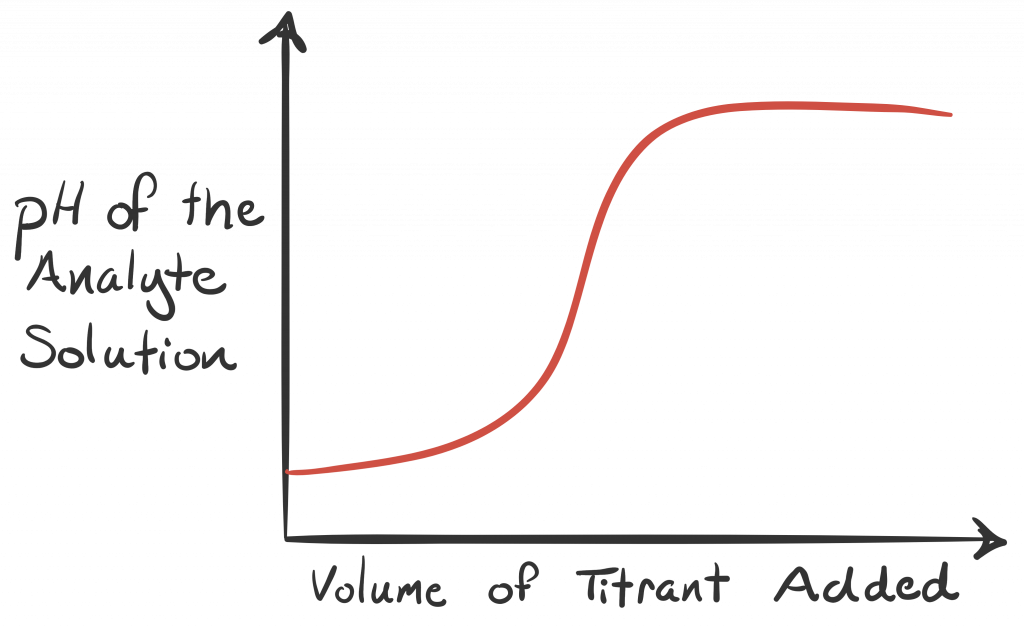
End-point is a physical change of solution that indicates the completion of titration. It is used as a signal for testers to stop adding more titrant to the analyte. Usually, it is indicated by any form of a visual indicator like color change, a visible precipitate, or a change on an electronic readout.
Performing a routine titration to determine the concentration of a analyte
The following steps use a conventional glass burette to do the titration. The same experiment can also be performed with the help of an electronic burette, a better option that minimizes the risk posed by multiple sources of error that may occur with conventional glass burette:
1. Place a known volume of the solution of unknown concentration (the analyte) in a flask and fill the solution of known concentration (the titrant) in the burette.
2. Slowly open the burette tap and allow the titrant to come down in the analyte. Determine the correct titration speed – too slow and the titration duration is unnecessarily prolonged; too fast, and the equivalence point is exceeded.
3. Keep track of the color of the analyte – completion of titration is usually indicated by color change.
Finally, if the titrant and analyte are in the 1: 1 mole ratio, use the following equation to determine the concentration of the analyte.
Mtitrant x Vtitrant = Manalyte x Vanalyte where,
Mtitrant = Molarity (M) of the titrant,
Vtitrant = Volume (V) of the titrant,
Manalyte = Molarity (M) of the analyte, and,
Vanalyte = Volume (V) of the analyte.
Note: Molarity is the concentration of a solution expressed as the number of moles of solute per liter of solution.
Application of the Titration
Titration is actually referred to as volumetric analysis. It is a technique on which many industries rely on the development and analysis of major chemical compounds. Here are some notable uses in titration in various industries that affect many aspects of society:
Pharmaceutical Industry: A particular amount of chemicals is prescribed for the development of drugs. This measurement of the amount of chemicals is finalized by the process of titration. Various titration procedures such as purity analysis, content analysis, precipitation titrations and pH-stat titration are used in the pharmaceutical industry.
Wine Industry: Wine makers use titration during the winemaking process. This allows them to check the quality of the raw materials used for production and to bring out the flavor of the wine. The titration also helps to test the batch during fermentation, and is used for final quality control.
Automotive Industry: The automotive industry uses the titration process to produce biodiesel oil. A special pH level is required to ensure the functionality of biodiesel oil. For this purpose, titration is useful. Manufacturers measure the pH level of biodiesel and then determine the amount of base used to achieve the desired pH level.
Food & Beverage Industry: The Food & Beverage industry primarily uses titration techniques for two purposes – regulatory requirements and quality control. Every producer should test and measure the quantity of different minerals in the food & beverage production. The presence of these minerals is determined by precipitation and complexometric titration.
Manufacturers use acid-base titration for quality control. It is important to control the taste, texture, nutrition, consistency and appearance of produced food.
Cosmetic Industry: To ensure quality production of cosmetics, manufacturers need to add appropriate concentration and quantity of chemicals. The titration process helps manufacturers determine the most suitable base for cosmetics, for example, coconut oil is used as a base in many products.
What is a Burette?
Burette is a laboratory apparatus commonly used to dispense and measure variable amounts of liquid or sometimes gas within chemical and industrial testing specially for the titration process in volumetric analysis.
Burettes can be specified according to their volume, resolution, and accuracy of dispensing. Smaller diameter tubes result in lower volume and increased resolution. Digital burettes can achieve better accuracy and are less dependent on the skill of the technician.
The first burette was created by chemists in the 19th century. It consisted of a simple glass tube with valves and later added graduations. This basic design is still widely used in glass burette. This should be carefully observed at eye level, ensuring that the liquid is free of bubbles and the reading is taken at the bottom of the meniscus. The delivered volume is the difference between the initial and final readings of reagent.
When is burette calibration required?
In order to maintain the quality of titration results, the burette must be in good condition and properly calibrated. Generally, the interval at which a burette needs to be calibrated depends on several factors:
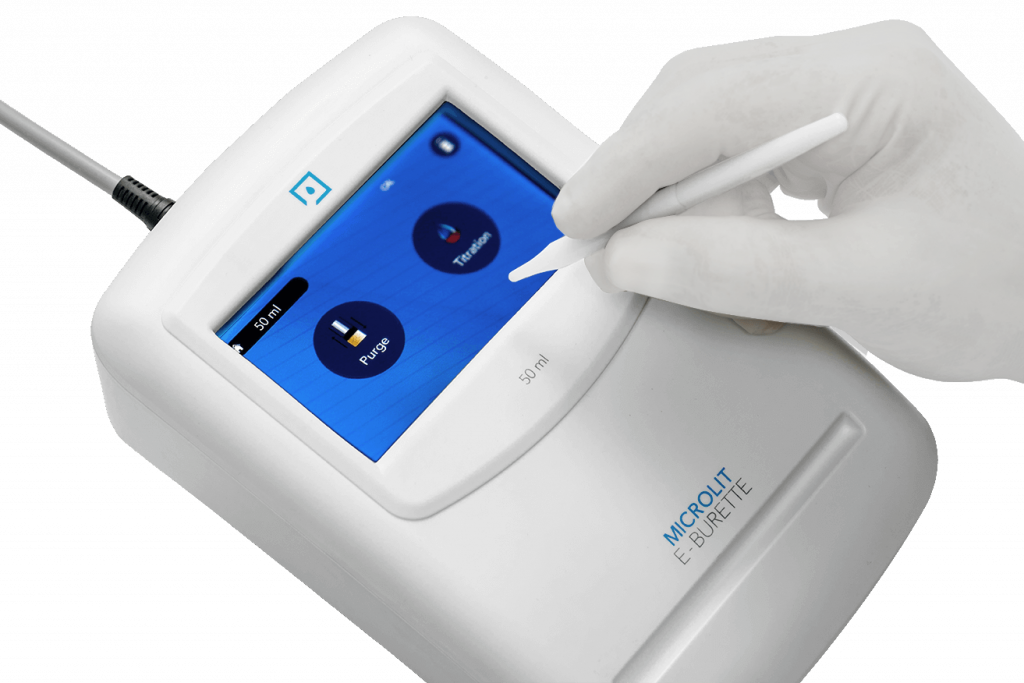
• Frequency of burette use
• Type of liquid dispensed by the burette
• Long period of non-usage
• Handling and care of burette
• Titration applications that require superior accuracy also demand more frequent calibration
Regulations and standards published by organizations such as the FDA and ASTM International provides minimum requirements to ensure the quality of laboratory testing results. Regulations specify that all laboratory instruments used in sampling & productions including pipette/ burette must be routinely calibrated at suitable intervals.
In the same series, the Clinical and laboratory standards institute (CSLI) has provided the guidelines for pipette/ burette that specifies these instruments must be calibrated every 3 to 6 months. And a minimum of two volumes must be tested with 10 replicas at both nominal and lowest settings. Establishing an appropriate calibration frequency minimizes the chances of incorrect liquid delivery in the laboratory and ensures traceability, accountability and confidence in the results.
To know more about Microlit’s E-Burette, please visit our website link: https://www.microlit.com/product-category/e-burette/

